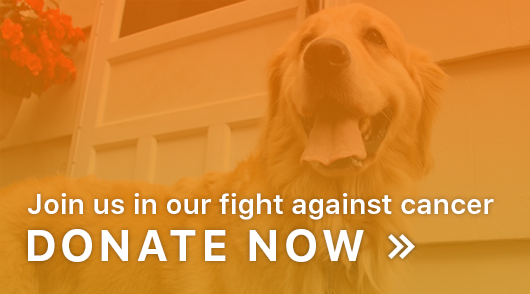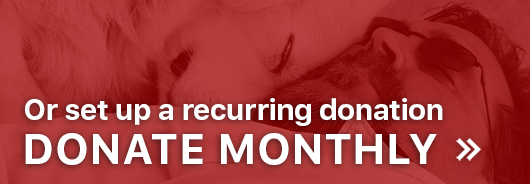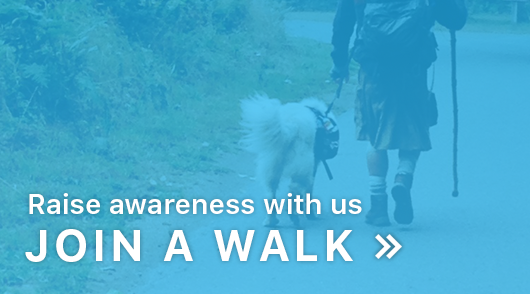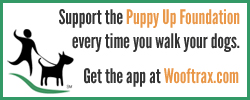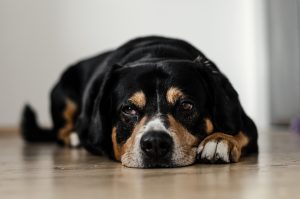
In keeping with both March being Poison Prevention Awareness Month and the arrival of Spring (yes, it’s out there somewhere, rumored to be March 20th this year), we thought this would be a perfect time to publish this great article on creating a dog-friendly (and safe) garden. Here are some excellent tips on how to create a garden both you and your furry companion can enjoy, while maintaining a safe, fun, and toxic-free environment. Happy Spring and happy gardening!
Learning how to create a dog-friendly garden is the perfect way for you and your four-legged friend to enjoy the outdoors together. Owning a garden, or a dog, takes planning in and of itself, so combining the two definitely requires a little research on your end. From using vertical garden planters to training your dog specific manners, there are many tricks to having the best of both worlds. So don’t fret; by following the tips in this guide you are sure to give Fido the best gardening experience possible without sacrificing your gardens appeal.
Work With Their Instincts
Dogs are natural protectors who need to feel safe within their territory. This means that your canine will probably be spending a lot of time patrolling the fence perimeter searching for anything that may pass by and get their attention. You should work with this need to protect by incorporating trails close to your fence line for your dog to follow.
It’s easy to set up a pathway using grass, wood, or other gardening options to keep your canine patrolling with ease. Your dog will want to traverse this area every time someone passes by so be sure to leave them enough room. Three feet is enough for regular sized dogs. You may need to make this aisle wider if you have a large dog.
Dogs Love to Dig
Most dogs love to dig around your fencing area in an attempt to get a better view of passing pedestrians. If your dog is extremely athletic, they may even be able to jump your fencing. When dealing with a dog that can leap fences with ease, you simply plant scrubs in front of the fence to prevent your pup from getting directly next to your fencing. Dogs that dig may require you to extend your fence deeper into the ground to prevent your pet from escaping.
Designated Relief Spots
Your dog needs somewhere to go potty at that is not directly around your living spaces. You will need to take some time to train your pup to recognize this area as their designated bathroom space. This isn’t too difficult to do and the internet is filled with dog potty training guides to assist you on your journey. Training puppies can be easier because they can be trained from day one to utilize their designated bathroom areas.
Protect Your Plants and Your Dog
This really comes down to garden planning. You should place your delicate flowers in raised pots, such as in these Ario Lite Planters or in the center of the garden where they are least likely to be trampled by your dog. Hanging baskets are another awesome way to enjoy your plants without allowing your pet access to them.
Be sure to do your research before you add any plants to your garden to ensure they are not poisonous to your pets. Pesticides, poisonous plants, and other harmful garden scenarios should be avoided at all costs. Remember, your dog is very sensitive to chemicals and even the smallest amounts can cause your pet to needlessly suffer.
Water and Shade
No matter what type of dog you have, you are going to want to give them adequate access to water and shade. A water bowl should be left in a shaded area that allows your dog to lounge when the weather becomes too hot.
You may need to add additional protection to your fountains to prevent your four-legged friend from drinking or bathing in them if they get the urge. Dogs can act lethargic in the hot summer sun, so be sure to give them a comfy place to chill out and you are guaranteed to have a garden space both you and your dog can enjoy.
A Safe Garden for Your Canine Companion
America is a country of dog lovers, and it is estimated that there are 78 million dogs owned. Owning a dog comes with responsibilities, and one of those is making sure that your dog gets plenty of exercise to keep it healthy. Dogs love to spend time out in the garden with you; it’s a space to play, to learn, and to run around. Creating a safe environment for your dog is really important as there are many plants that are toxic to dogs. Dogs are also very sensitive to any chemicals and fertilizers that you use in your garden. Help your dog to have fun in the garden, and keep safe and well.
A lovely lawn
In order to get a lovely green looking lawn, many households have their lawn treated with fertilizers and chemicals. This might give produce lush looking grass, but lawn chemicals are dangerous for your dog. Dogs pick up the chemicals in their fur and on their paws. Once they are contaminated, they can pass this on to humans too. Chemical exposure in dogs has been linked with bladder cancer and lymphoma. This is a very heavy price for green grass.
Some very poisonous plants
Many of the common plants and flowers that you put in your garden can be seriously poisonous to dogs. When you are creating a dog friendly garden, make sure that you avoid daffodils, tulips and croci. These spring blooms can cause serious stomach upset and convulsions. Cyclamen and Amaryllis are two other bulb-grown plants that can cause vomiting, heart arrhythmia and tremors. Foxgloves are highly poisonous to both dogs and humans and should be avoided. Before you choose your bedding plants, make sure that they are not on the list of plants poisonous to dogs.
Border control
If you are letting your dog out into the garden, you will need to make sure that all of the perimeters are secure. Dogs love to run around and explore. A dog friendly garden needs to be fenced all the way around to ensure that your dog doesn’t go out onto the streets, or into neighbors gardens where they may not be welcome. If you have a small dog and find that it is able to escape underneath your garden fences, a strip of chicken wire running around the bottom of the fence is a good way to ensure that they cannot get out.
Dogs are true members of the family and it is important to keep them safe and healthy. There are many hazards in gardens that can be easily avoided. By creating a safe garden for your canine companion, you can make sure that they can enjoy the outdoors happily.

